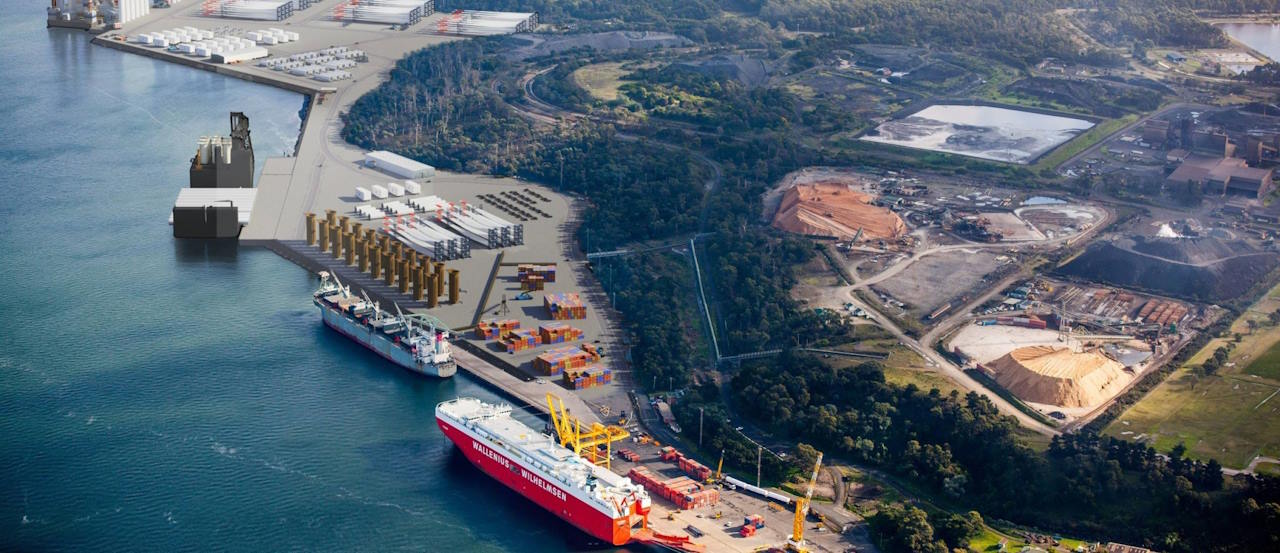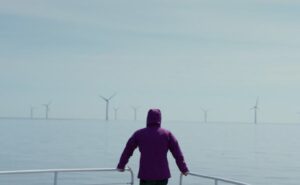Days after the federal government declared a new offshore wind zone in the Bass Strait, the Tasmanian government has unveiled plans for the nearby Port of Bell Bay to host a renewable energy terminal and serve as a key hub for offshore wind development.
TasPorts, the state-owned company responsible for eleven Tasmanian ports and the Devonport Airport, announced late last week its “bold vision” for the major deep-water industrial Port of Bell Bay, located close to the mouth of the Tamar River, Building on existing plans for the Port.
Though the Port’s plans to play host to the so-called Bell Bay Hydrogen Hub have suffered setbacks this year – including the withdrawal in August of Woodside’s plans for a hydrogen project at the Port – the Tasmanian government and TasPorts remain bullish on the potential of the Port of Bell Bay.
The proposed Bass Strait Renewable Energy Terminal would be have a staged development of up to 25 hectares of additional land at the Port, adding new berths and associated infrastructure.
This includes large-scale laydown and storage areas for offshore wind components, and tailored infrastructure to support the construction, operation, and maintenance of multiple onshore and offshore wind projects.
Given its location, it could prove a key player not only in the development of wind projects in Tasmania, but also across the southeast of Australia, where numerous offshore wind farms are already in development off the south coast of Victoria and east coast of New South Wales.
But its primary focus would be to service the newly declared Bass Strait zone, which will sit at least 30 km off Tasmania’s north coast, spans 7,100 km2 and is expected to be able to host up to 20 gigawatts (GW) of offshore wind capacity – although that would also require a significant boost in the sub-sea transmission links.
“The Port of Bell Bay’s proximity to Bass Strait renewable energy zones provides a significant strategic advantage,” said Anthony Donald, TasPorts CEO.
“By unlocking this potential, we aim to deliver the infrastructure needed to attract investment and boost renewable energy generation for Tasmania and the nation.
“The Bass Strait Renewable Energy Terminal has the potential to deliver enormous benefits—locally, regionally, and nationally—by supporting offshore wind developments that will drive significant renewable energy generation.”
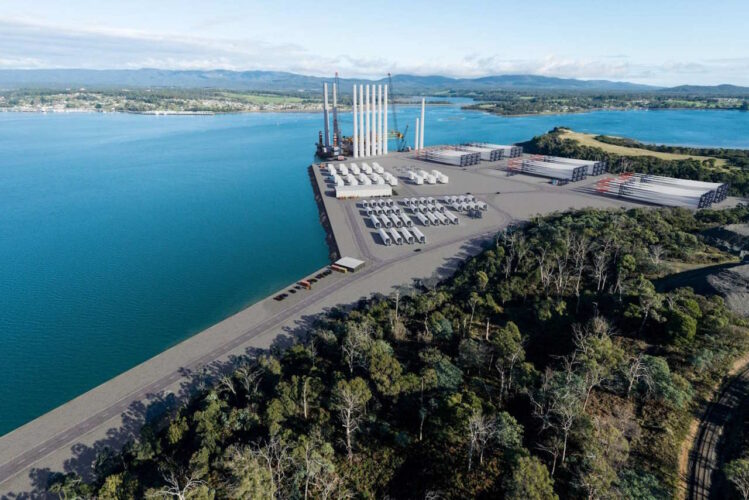
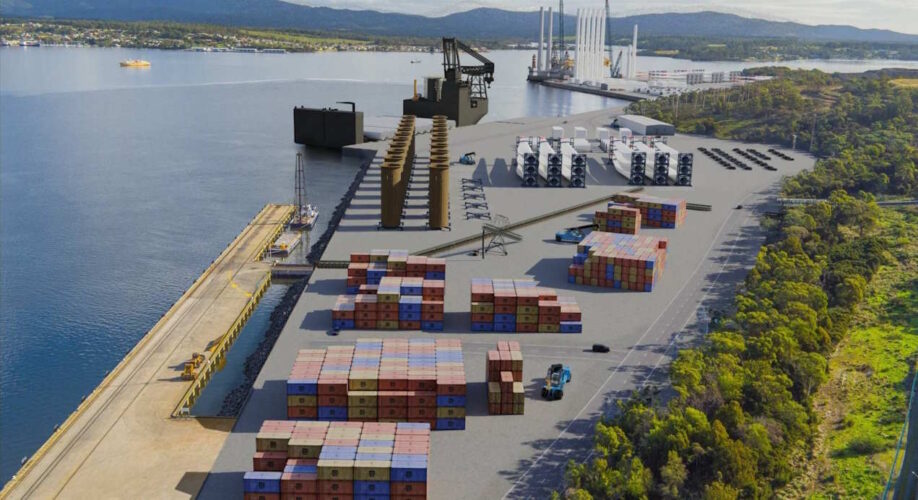
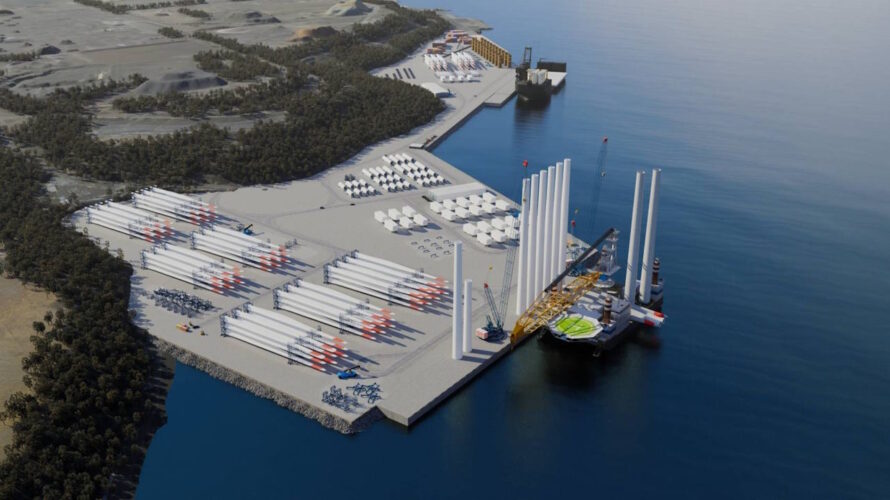
The Port of Bell Bay has been on the radar for wind energy development in southeast Australia for a while now. In August of last year, the Port was one of five ports identified by the developers behind the Star of the South offshore wind farm that could play an important role in the wind farm’s construction and operation.
But the Port of Bell Bay is not alone in its efforts to capture the industrial workload that will come as Australia ramps up its offshore wind efforts. Victoria’s Port of Hastings in Western Port Bay has made several recent attempts to position itself as southeast Australia’s deepwater port of call for offshore wind development.
Preliminary plans were submitted in late 2023, before being pared back after its original plans were deemed a “clearly unacceptable” environmental risk by the federal government in January, citing impacts on the Western Port Ramsar wetlands, which are internationally protected.
A state environmental assessment process was launched last month to explore alternative project layouts, designs, and approaches which would avoid and mitigate the impact on local wetlands and other habitats and species.
The Port of Bell Bay may be boosted by news in August that the Tasmanian government had fast tracked the 224MW Bell Bay wind farm by giving it major project status.
Bell Bay is virtually guaranteed to be used for the 8MW turbines that will be deployed when construction starts in 2026 or 2027.

